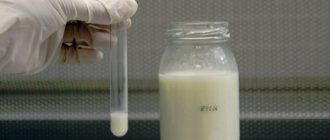Before I started writing about the nutrition of a nursing mother, I thought for a long time, studied, read, and translated. This topic seems so simple, easy and understandable that some will consider it unimportant. Until they give birth. Until the maternity hospital brings you dry buckwheat with chicken breast and says that this is your diet for the coming months. Until mom comes to visit for her birthday, where instead of tea and cake she will have to drink water, since caffeine and sweets will be strictly prohibited. Until the desire to live a normal life leads to the thought: “why do I need breastfeeding with its set of problems and limitations”?
Therefore, I would like women to have high-quality and useful information on nutrition issues that meets the criteria of evidence-based medicine.
The text is based on recommendations from the World Health Organization and the latest research.
From the article you will learn:
Nutrition for a nursing mother in the first weeks after birth
Very often, women are advised to go on a strict diet, but this is an unfounded recommendation.
Pregnancy and breastfeeding are a continuous process of symbiosis between mother and child. The baby gets acquainted with the standard set of products of his family while still in the womb. You do not need to radically change your diet after giving birth and completely eliminate all “dangerous” foods. The main thing is that the food you eat is of high quality, rich in microelements and vitamins.
The diet of a nursing mother is no different from the diet of an ordinary woman. However, the baby may react to the peculiarities of the mother's digestion. Therefore, in the first weeks after childbirth, you should adhere to a healthy diet and monitor the normal functioning of the intestines.
“Healthy eating is primarily the interest of the mother herself! If you often eat fast food, then this will have a very slight effect on breast milk, but the mother’s health may suffer. But if fast food happens once or twice a month, then there is no reason to worry at all.” *
Try to eliminate foods high in sugar from your diet. Sweets are allowed in moderation. It's best to save carbonated drinks for later. By the way, you need to drink as much as you want, without restrictions. But it is better to drink tea and coffee between meals so as not to reduce the absorption of iron. Be careful with caffeine, it can make babies hyperexcitable.
When cooking, opt for steaming and baking instead of frying. This will help reduce fat and salt content. It is also very important to have slow carbohydrates and foods with plant fiber in your diet (subject to a positive reaction from your digestive system).
List of low-allergenic foods for nursing mothers
In order to find out what foods a nursing mother can and cannot eat, you need to understand that the nutrition of a nursing mother consists of three important principles:
- safety;
- diversity;
- correct drinking regime.
Safety
The daily diet should not contain foods containing dyes, preservatives, or harmful compounds . In addition, it is unsafe to consume tobacco products, alcohol, coffee, and strong tea.
Potentially dangerous and even prohibited foods for a nursing mother include radishes, cabbage, melons, broccoli, brown bread, garlic, and cucumbers, as they can cause severe painful colic in a newborn. However, the list of such products can be expanded or narrowed independently, depending on the individual reactions of the child.
Do you know what sedative you can use while breastfeeding? How to do without medications is in our article.
Find out how to properly massage the breasts of a nursing mother here. Provide timely help to your breasts.
Correct drinking regime
A woman feeding her baby with breast milk should drink at least one and a half liters of clean still water per day.
The rest of the drink consists of weakly brewed teas, juices, fruit drinks, and jelly.
Diversity
It is a mistake to believe that a young mother’s diet is poor. With its proper organization, you can receive not only all the useful substances, but also taste pleasure.
The mother herself should not limit herself in taking permitted food, wanting to get rid of excess body weight. The very nature of nutrition will help you get back to your previous shape without compromising the health of the baby.
Nutrition of a nursing mother and allergies
What to do with allergies? After all, every year the percentage of people with this disease is constantly growing, and you want to protect your baby.
Everything here is very interesting, because research shows that the later a person becomes acquainted with potential allergens, the higher the risk of developing negative reactions to them. That is, a strict diet for a nursing mother not only does not reduce, but even increases the risk of allergies in the baby.
However, food does not always provoke a reaction. More often, the disease has other causes: dry indoor air, dust, lack of walks, plant pollen, animal hair and skin secretions, shower gels and washing powders with aggressive surfactants and fragrances, fungal diseases, stress, and a number of other reasons. The importance of these factors has been scientifically proven!
Only 5-6% of children in the first year of life suffer from food allergies. Therefore, a strict, restrictive diet is not relevant for every breastfeeding woman.
There is controversy about the use of cow's milk protein (CMP) during the first time after childbirth.
“Of course, in the first months of the baby’s life, it is better for the mother not to overuse dairy products. Cow protein is tricky, trace amounts are found in breast milk even 7 to 10 days after the last meal, and a sensitive baby will react to it. Taking enzymes specifically for the mother can help; this reduces the number of undigested protein molecules in the mother’s bloodstream and, as a result, in the milk.” **
Man is the only creature on the planet that consumes the milk of other animals. The immune system of an adult is formed and stable; it may not react so strongly to foreign proteins. The child’s body, as a rule, reacts more sharply, which will manifest itself in the form of abdominal pain, excessively loose stools, sometimes with greens and even blood, skin reactions and anxiety. All these signs are indirect, but if they are present, it is still worth excluding BKM from the mother’s diet first, since most infants with food allergies react specifically to it.
By the way, BKM is contained in almost all mixtures available on the market (albeit in processed form).
If there is an allergy in the first line of kinship (you, your husband, the child’s grandparents), then you can eat one-ingredient meals and monitor the baby’s condition.
First of all, products from the “Big Eight Allergens” require caution:
- animal milk (we most often use cow's milk),
- peanut,
- nuts,
- eggs,
- seafood,
- fish,
- soy products,
- wheat and gluten-containing grains.
There is no need to exclude them from the diet in advance, since it is not a reaction to a specific product that is passed on to the descendants, but a general predisposition to allergy-like manifestations. However, if skin rashes and other symptoms suddenly appear, it is worth taking a break for the entire group for 2 weeks, and then introducing products one at a time.
Another important factor that cannot be kept silent about is the presence of histamine liberators in the mother’s diet.
During an allergic reaction, our body produces histamine. He is responsible for all the specific manifestations of this disease that we observe. There are a number of foods that are not allergens themselves, but can significantly enhance the effect of histamine.
These are chocolate, coffee, cocoa, citrus fruits, exotic fruits and vegetables, smoked meats, pickles, marinades, spices, food additives, flavor enhancers, dyes, chemical vitamins, honey and sugar.
List of approved products for nursing mothers
- Meat . Meat of various types. Experts recommend choosing low-fat varieties that are usually classified as dietary foods, for example, rabbit, veal, and turkey.
- Fish . Fish of various varieties, it is better to give preference to whitefish.
- Cottage cheese . The fat content of cottage cheese should not exceed 5%.
- Dairy products . You can drink natural yogurt, kefir, bifidokefir, but not more than 800 ml per day.
- Cheese . Cheese varieties should not contain spicy additives, and the taste of the product should not be too salty.
- Milk and derivatives . In its pure form, the daily dose of milk should not exceed 200 ml; it can be used in recipes for preparing various dishes.
- Fresh vegetables . Carrots, onions, celery, cabbage to a limited extent, beets - all this is a source of complete plant fibers, without which it is impossible to organize proper digestion.
- Berries . Cherries and currants will help you prepare a wonderful dessert.
- Fruits . Apples, pears, in small quantities - bananas, pineapples, peaches.
- Juices . Juices are one of the parts of a proper drinking regime.
- Vegetable oils . Vegetable oils are a valuable source of vitamin F and a group of free fatty acids.
- Animal oils . Animal oils allow you to obtain retinol, Vitamins E, D, phosphatides, essential fatty acids.
On a note ! List of products that have a laxative effect:
- Beetroot, beetroot juice
- Kiwi
- Pineapple juice
- Cabbage, cabbage juice
- Grapes, light grape juice
- Plum, prunes
- Dried apricots
- Pumpkin
- Oatmeal
- Quail eggs
Dairy products to increase the lactation of a nursing mother
- Porridge with cream . Porridge on water with the addition of 10% cream; after eating such cereals, the breasts become abundantly filled with milk;
- Teas . Warm herbal teas. It is useful to drink green tea with a teaspoon of honey, a weak drink with milk half an hour before feeding;
- Decoctions . Warm decoction of dried fruits. This drink is rich in vitamins and nutrients, helps improve the quality of lactation;
- Nuts . The product not only enhances milk production, but also increases its fat content;
- Halva . It is recommended to consume halva in small quantities; it has a beneficial effect on the fat content of milk. This is especially true when there is enough milk, but the baby does not get enough and often asks to breastfeed;
- Water . Still, clean water is a prerequisite for successful breastfeeding. You need to drink from one to one and a half liters per day;
- Soups . Dietary soups and broths. The dish is very useful for the mother herself. If it is cooked using poultry meat, it is advisable to use secondary broth. The milk produced is nutritious and tasty;
- Cheeses . Hard cheeses. The tasty product is very useful for stabilizing lactation;
- Carrot . Carrots and carrot juice. The vegetable stimulates the flow of milk into the breast, but consumption should be dosed;
- Dried fruits . Oatmeal with dried fruits and dried apricots. For a mother during breastfeeding, this dish can be an ideal breakfast;
- Watermelon . The juicy, sweet berry significantly increases lactation.
The influence of products on the baby's health
Everything a woman consumes affects the baby’s health.
The impact can be both negative and positive.
Daily menu recommended for a nursing mother:
- Milk added to tea - no more than 150 ml,
- Fermented milk drinks - 500 ml,
- Water - at least 2 liters,
- Cereals - about 100 g,
- Cheeses - 20-30 g,
- Sour cream - approximately 20 g,
- Cottage cheese - 100-150 g,
- Egg - 1 piece,
- Fruits - 200-300 g,
- Vegetables - 500-600 g,
- Low-fat varieties of fish and meat - 200-300 g each,
- Vegetable oil - 15 g,
- Butter - 30 g,
- Bread with bran - 200 g.
Herbs
Ginger, chamomile, echinacea
If a woman takes these plants in the form of tea, it is recommended to strictly follow their dosage.
High concentrations of herbal teas can be dangerous, especially if they contain goldenseal, which is traditionally added to echinacea.
It is generally accepted in the medical community that it can cause brain damage in infants.
Borage, anise, ground fenugreek, raspberry leaf, nettle, fennel, dill, verbena
It is recommended that you consult with an herbalist or physician before taking any of these herbs.
Not all of them have been recognized by science as safe and effective.
Tansy
This cannot be said that the herb is completely safe for the health of a baby during breastfeeding. This herb can also be classified as a laxative product for a nursing mother.
The plant is often used to treat migraines and has healing properties, but it is of no use to a baby.
Do you know what a lactation specialist can do? Use the help of a consultant and make yourself and your baby happy!
A popular question is whether you can take paracetamol while breastfeeding, which is covered extensively in the article. Find out the safest remedy for pain due to hepatitis B.
Follow the link to learn how to properly express with your hands https://zdorrov.com/uhod/gv/kak-stsezhivat-grudnoe-moloko-rukami.html. Use only the correct technique!
Breastfeeding for the first month

The benefits of breast milk are undeniable. This is an ideal food for a child, protecting his health and increasing immunity. Breastfeeding is especially important in the first month, when the baby is just starting to live in the big world. A mother needs to learn how to properly put her newborn to the breast, and also correctly create her menu - the quality of breast milk depends on it.
Table of contents
|
First breastfeeding
For the first time, the baby is given the breast shortly after birth, for 2-3 minutes. This is not full feeding - the baby is not that hungry, and there is no milk in the breast yet.
But colostrum, which is released in small quantities from the breast after childbirth, is the most valuable substance for newborns.
Its advantages:
- unique nutritional value;
- high content of immunostimulants;
- rich in useful components: vitamins, minerals, amino acids, etc.
Feeding rules
It is very important to teach your newborn to latch onto the breast correctly from the first feeding. Failure to comply with feeding techniques leads to serious problems - cracks, painful abrasions on the nipples, mastitis.
In the maternity hospital, midwives will tell an inexperienced mother how to feed correctly.
Basic recommendations:
• The baby should latch onto the nipple with part of the areola.
• Do not allow your baby to fall asleep with the nipple in his mouth. A sleeping child is woken up by lightly rubbing his cheek. If the baby is full and doesn’t want to wake up, the mother needs to gently press the chin to open her mouth and remove the nipple.
• To avoid regurgitation of milk, after feeding the baby is held in a “column” for several minutes so that he burps the air captured during sucking.
If difficulties arise due to the shape of the nipples, you can use special silicone covers. They will also help with nipple damage, protecting the breasts during the treatment period.
Feeding frequency
In the first month, the baby's feeding pattern is determined. You can come across two polar opinions - on demand and strictly according to schedule.
It makes sense to develop an individual schedule that is as comfortable as possible for both the baby and the mother.
Feeding whenever your baby is fussy can lead to him getting used to eating every 20-30 minutes. He will suckle in this mode for a short time, without emptying the breast completely.
Mom will have to forget about rest; lactation will begin to decline.
Strict adherence to a schedule is also not the best option. The baby is not a robot, he may get hungry a little earlier or later, and may become capricious.
Allowing a child to scream while waiting for the set hour or waking up a sweetly sleeping baby for feeding is hardly worth it.
Useful tips for mothers: BASIC FEEDING RULES
From the first month you need to accustom your newborn to a certain schedule. The first week the interval between feedings is about 2 hours, then it is gradually increased to 2.5-3 hours.
You should focus on the baby's behavior. If he is capricious, and a little time has passed since feeding, you can try to calm him down without breastfeeding.
But if the baby does not calm down for a long time, then there is nothing wrong with a one-time violation of the schedule - perhaps the baby sucked less milk than usual during the last feeding.
By the end of the first month, an attentive mother will be able to develop an optimal feeding regimen, focusing on the behavior of the newborn.
Nutrition and weight gain standards
The main indicator of a child’s normal nutrition is his well-being. If the baby sleeps peacefully, actively suckles at the breast, has regular bowel movements, and gains weight, this means that the baby is receiving a sufficient amount of breast milk.
The amount of milk a newborn drinks and the rate at which he or she gains weight varies from person to person. They depend on the weight he was born with, his health status and other factors.
We can only talk about approximate indicators, which are presented in the table:
| Index | Value (in grams) |
| Volume of milk per day: first days to the end of the month | 200 600 |
| Milk volume per feeding by the end of the month | 60-70 |
| Weight gain in the first month | 600 |
Diet of a nursing mother
The first month is the most difficult and important for the health of the baby, who is just getting used to life outside the mother’s belly.
Breast milk is his only source of nutrients. And the composition of breast milk depends entirely on the mother’s diet.
The lactation process during this period is just being established. Severe dietary violations - for example, a small amount of fluid - can cause insufficient milk production.
A lack of nutrients in the mother's diet will lead to them being introduced into the milk from the woman's body, which will lead to problems with her health.
The formation of the digestive organs of a newborn baby is not yet complete. Therefore, digestive disorders in the first month of life can affect the health of a grown-up child later.
A woman’s careless attitude towards her diet can cause frequent colic, allergic rashes, and bloating. This, in turn, will lead to poor sleep, whims and problems with the baby’s nervous system.
General nutrition rules
Several medical recommendations for creating a mother’s menu in the first month of lactation:
• eating in small portions up to 6 times a day; if desired, you can eat before night feeding;
• do not introduce food into the diet that was not on the menu when the child was pregnant;
• it is advisable to limit yourself to products from your region;
• It is advisable to limit yourself to seasonal fruits and vegetables.
Recommended Products
The range of permitted products in the first month of breastfeeding is limited, but quite extensive. Frying should be excluded from cooking methods. When cooking, salt, sugar and spices are added minimally.
What you can eat:
• vegetables after heat treatment: cauliflower, zucchini, potatoes, carrots, white cabbage;
• green or yellow fruits: pears, apples, imported ones – only bananas;
• dairy products: fermented baked milk, kefir, yogurt, cottage cheese, milk (not whole) are used to prepare porridges and soups;
• cereals: buckwheat, oatmeal, millet, semolina;
• meat: chicken, veal, lean pork or beef;
• fish: lean, 2-3 times a week;
• butter: vegetable and butter, adding little by little to dishes;
• flour products: bread, crackers, dry cookies;
• nuts, seeds limited;
• drinks: herbal teas, milk tea, compotes, drinking water.
Prohibited products
The list of prohibited products includes those that cause unwanted reactions in the baby. During lactation the following are prohibited:
• Possible allergens: citrus fruits, brightly colored fruits and berries, smoked foods, canned food, honey, chocolate, cocoa.
• Due to possible colic: sweet baked goods, whole milk, sweet confectionery, legumes, fresh cabbage, fresh cucumbers, grapes, sparkling water, fatty foods, pickles, smoked meats, coffee, strong tea, alcohol.
Products with a large number of artificial additives are prohibited - sausages, mayonnaise, sauces, fast food.
• Due to changes in the taste of breast milk: raw onions, garlic, strong-tasting seasonings.
How to introduce new products
The mother's menu in the initial period should be optimal for the baby. Gradually expanding the diet - for example, when introducing new porridge, meat, cookies - you need to carefully monitor the newborn's reaction.
If constipation or diarrhea appears, regurgitation becomes more frequent, the child becomes worried, it is better to remove the new dish.
General rules for introducing a new product:
• add only one new product in 1-2 days, so that there is time to track the baby’s reaction;
• introduce a new dish in small portions;
• it is advisable to take notes about the food being introduced and the child’s behavior;
• if problems arise, the dish is removed from the menu - you can try again in 2-3 weeks.
These rules will be useful to the mother not only in the first month, but also in the future, when as the baby grows, the list of foods prohibited for a nursing woman will be reduced.
Possible problems in the first month of breastfeeding
The lactation process is individual. If a nursing mother feels like she doesn't have enough milk in the first month, she should consult a pediatrician.
The doctor may weigh the baby before and after feeding to determine the weight of the sucked portion.
If necessary, a woman may be advised to drink plenty of fluids and special products that stimulate lactation: “Femilak”, “Milky Way” and others.
Gradually, the growing baby will suck more milk, and lactation will improve.
The opposite problem is possible - milk comes in from the first days, and the newborn does not yet need such portions. The remaining milk after feeding must be carefully expressed, otherwise breast diseases may occur.
Expressed milk into a sterile container can be frozen for long-term storage for future use. A stronger baby will be able to suck the breast completely.
A common problem in the first month is nipple damage. The skin that has not had time to harden is easily damaged by inept feeding, which makes the process very painful for the woman.
Therefore, you should properly attach the baby to the breast from the first feedings and carefully care for the breast.
To heal cracks, you can use an oil solution of vitamin A, as well as ointments recommended by a gynecologist. Regular air baths are very beneficial for the chest. Overlays can be used while the cracks are healing.
The first month of life is the most difficult and responsible for a newborn, and breast milk will help him get stronger.
Breastfeeding not only provides the best nutrition for your baby. It gives him a feeling of security and special comfort from the closeness of his mother, which a newborn needs for successful development.
- about the author
- Recent publications
Tatiana Fedorova
author of the publication (site editor)
KINDERGARTEN TEACHER has been working with the youngest people for many years.
Tatyana Fedorova recently published (see all)
- Malyutka formula: baby food - 08/31/2019
- Mixed feeding at 6 months - 08/12/2019
- Artificial feeding of a child at 4 months - 08/05/2019











